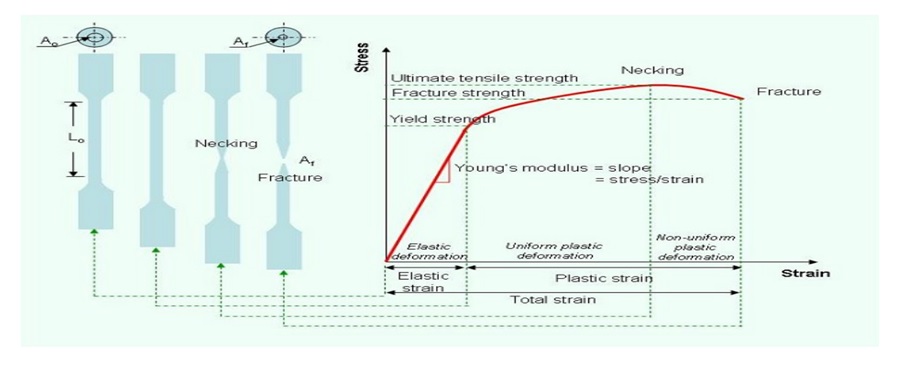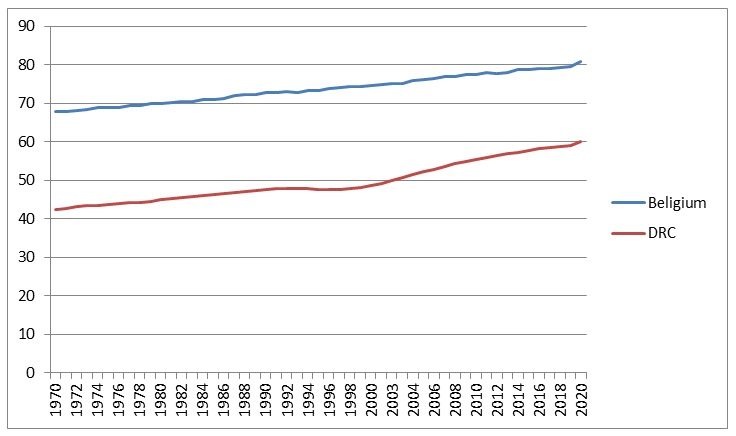Located in northwestern Europe, Belgium is one of the smallest and most densely populated nations. Since its independence in 1830, the country has had a representative democracy with a hereditary constitutional monarch. In the 1980s, steps were taken to turn the nation into a federal state where powers are shared among Brussels-Capital Region, Wallonia, and Flanders. Belgium participated in the Industrial Revolution and later became a colonial power with some colonies in Africa. The city of Brussels is the nation’s capital as well as the seat of the European Union. Belgium is considered a democratic, politically stable nation with a high human development index, an advanced high-income economy, high living standards, quality of life, education, and healthcare.
The Democratic Republic of the Congo (DRC) is a large country in Central Africa. By area, DRC is the largest country in sub-Saharan Africa, the second-largest in the continent, and the 11th-largest. Also, DRC, with a population of more than 90 million, is the fourth most populous nation in Africa and the 15th-most populous globally (The World Bank 23). The country achieved independence from Belgium in 1960, but it experienced political tensions immediately, which have led to many wars and armed conflicts since then.
Currently, DRC is a less stable government with large parts of the country, especially in the east and southern parts, remaining highly volatile due to militias and rebel groups (Frankema and Buelens 38). DRC is a developing nation even though it has massive natural resources. It ranks very low in terms of human development index, transparency, political stability, economic development, living standards, quality of life, education, and healthcare. There is indeed a specific relationship between Belgium and DRC because, among others, they share such aspects as language and the fact that DRC was a colony of Belgium until 1960. In addition, Belgium hosts many immigrants from DRC, while the Congo is home to many corporations owned by Belgians.


To analyze the concept of economic convergence, the economic growth rate in Gross Domestic Product (GDP) and life expectancy rates in years have been chosen as the indicators of interest. In this case, data on the GDP and life expectancy rates for Belgium and DRC between 1970 and 2020 were obtained from the World Bank database. As shown in figures 1 and 2, the two countries differ significantly in the trend for the two indicators. As the graph shows, Belgium has maintained an annual growth rate of between 0% and 5% for most of the 50 years. Belgium’s GDP had only three troughs experienced in 1974, 2008, and 2020 (The World Bank 12). In both 1974 and 2008, there were global financial crises that affected many economies around the world.
In 2020, the global Covid-19 pandemic affected almost all economies in the world, which explains the trough (The World Bank 11). DRC’s GDP has had many troughs and peaks throughout the 50 years. The country’s GDP had multiple troughs in the 1970s, 1980s, 1990s, and early 2000s, most of which are associated with armed conflicts and wars that have affected DRC since independence. In the same way, there is a large difference between the two countries’ life expectancy as measured by years. It is worth noting that both countries have experienced an increase in life expectancy. On its part, Belgium’s life expectancy increased from 67.5 in 1970 to 80.8 in 2020 (The World Bank 10). Similarly, DRC’s life expectancy increased from 42.46 to 60.21 between 1970 and 2020 (The World Bank 9). There is a difference of 20.79 in the life expectancy of the two countries, which means that the gap is quite large (Müller-Crepon 9). Indeed, Belgium’s life expectancy trend is that of a typical developed nation, while DRC is that of a typical poor, third-world state.
Based on this analysis, it is evident that there is no convergence between the two nation’s development rates, as shown by the two indicators. Proponents of the concept of economic convergence state that poor, developing nations experience faster development rates relative to wealthy, developed nations (Ahmad and Hall 1066). The result is that the standard of living will have similarities after a long period, such as 50 years, as the developing nations catch up with the wealthy, developed countries (Ahmad and Hall 1066). However, judging by this comparison between DRC and Belgium, this pattern is not demonstrated, and it appears that the two nations did not converge and might also fail to do so shortly.
For economic convergence to occur, some conditions should be met. Some of these conditions are technology absorption, participation in global markets, and attracting capital. The developing nations should have these crucial social capabilities. In the case of DRC versus Belgium, these conditions were largely not met, which explains why there was no convergence. Specifically, DRC has remained poor because of its low level of technology absorption, low ability to attract capital, and poor participation in global markets (Müller-Crepon 4). Even though the country has numerous minerals and other natural resources, it fails to attract capital because of political instability and frequent wars, conflicts, and violence. Poor governance, infrastructure, political instability, and violence have also limited the country’s ability to absorb technology and participate in global markets.
Additional data can be used to demonstrate that economic convergence does not apply. For example, education rate, health, unemployment rate, literacy rate, human development index, and poverty rate can be used to show whether economic convergence occurs in two countries. The data is available, given that various sources such as the World Bank and government statistics provide them freely online.
Works Cited
Ahmad, Mahyudin, and Stephen G. Hall. “Economic growth and convergence: Do institutional proximity and spillovers matter?.” Journal of Policy Modeling 39.6 (2017): 1065-1085.
Müller-Crepon, Carl. “State reach and development in Africa since the 1960s: New data and analysis.” Political Science Research and Methods (2021): 1-10.
The World Bank. World Bank open data. World Bank, 2021.
Frankema, Ewout and Frans Buelens. Colonial exploitation and economic development: The Belgian Congo and the Netherlands Indies compared. Routledge, 2016.